Classé Audio Sigma Mono Amps
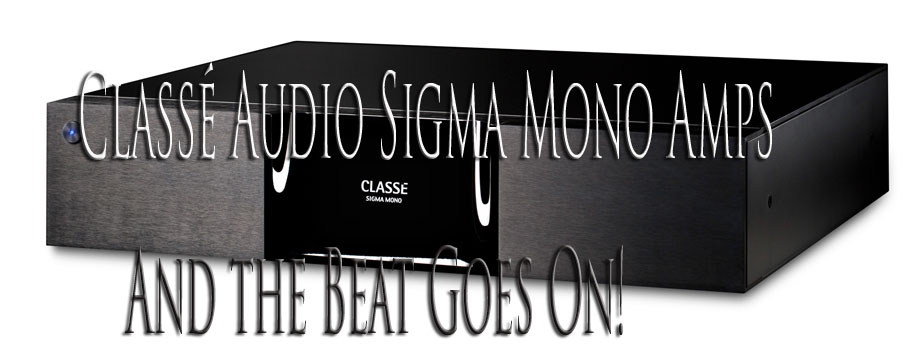
 Looking through the StereoTimes.com archives, I came to realize that I have reviewed eight different Classé Audio products over six separate reviews; easily the most reviews for any one product line. Reading over some of those reviews I noticed a familiar theme: “Classé Audio builds state-of-the-art, high-end audio products that are among the best looking and sounding products available, while still being reasonably affordable.” My last review of Classe’ components was of the Sigma Series SSP Surround Sound Processor and AMP5 Five-Channel amplifier. As you can guess my summary concluded that these products were attractive, great sounding and a bargain, given their price and competition. So when Classé offered me the opportunity to review the Sigma MONO Amps, I had a pretty good idea of what I would be in store. But this time there would be a little more to the story. But I’m afraid that if you want to know what that little more is you’re going to have to keep reading.
Looking through the StereoTimes.com archives, I came to realize that I have reviewed eight different Classé Audio products over six separate reviews; easily the most reviews for any one product line. Reading over some of those reviews I noticed a familiar theme: “Classé Audio builds state-of-the-art, high-end audio products that are among the best looking and sounding products available, while still being reasonably affordable.” My last review of Classe’ components was of the Sigma Series SSP Surround Sound Processor and AMP5 Five-Channel amplifier. As you can guess my summary concluded that these products were attractive, great sounding and a bargain, given their price and competition. So when Classé offered me the opportunity to review the Sigma MONO Amps, I had a pretty good idea of what I would be in store. But this time there would be a little more to the story. But I’m afraid that if you want to know what that little more is you’re going to have to keep reading.
The Sigma Mono Amp
The Sigma MONO amps are designed based on the circuit topology used in the company’s first class-D design, the CA-D200 amplifier. The MONOs also use switch-mode power supplies (SMPS) just like the other amps in the Sigma line. Basically, if you took the circuitry and power supplies from the CA-D200 and put them into separate Sigma chassis, you’d have the Sigma MONOs. Okay, so it’s not quite that simplistic, but doing that and using the mono amplifier architecture does rid the amps of any potential signal noise between channels, resulting in even quieter operation.
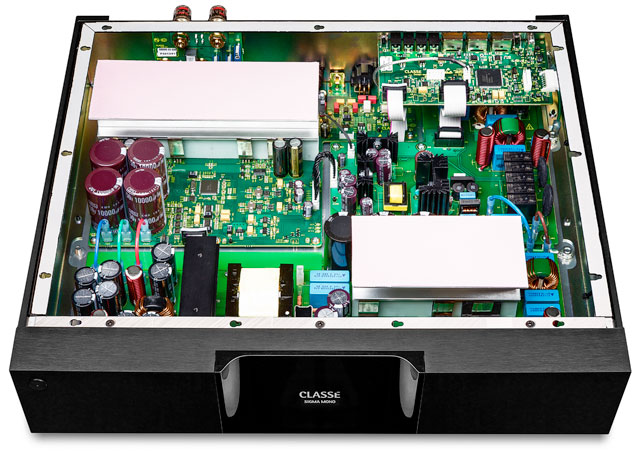
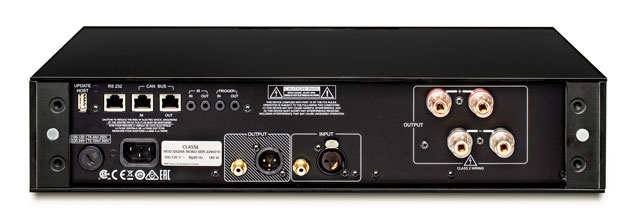
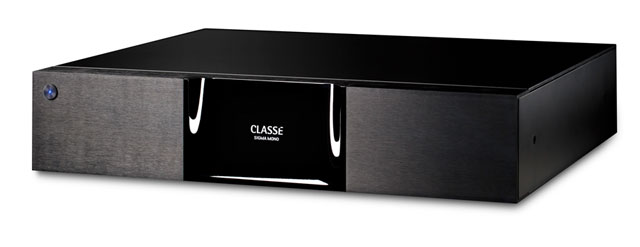
The MONOs are by no means behemoths compared to Classé’s Delta Series CA-M400 and CA-M600 mono amps. Still, they pump out a robust 350 watt per channel into 8 Ohms and 700 watts into 4 Ohms. It’s amazing what switching amplifier designs can do these days. Aesthetically speaking, the Sigma MONOs have the same chassis dimensions as all other Sigma components: 17” wide x 3.75” high x 14.57” deep, but it weigh in at 22 lbs. The gorgeous black faceplate features an elegantly sculpted mid-section where the company’s logo is located. It’s identical to the Sigma AMP5. There is only a flush-mounted “Standby/On Button and Status Indicator LED” on the front. On the upper left side of the rear of the Sigma MONO is the USB “Update Host” connection which is used to install firmware updates to the amp from a USB stick. This is a very neat and well thought out design feature. It assures the longevity of the equipment. To the right of that are the A/V system connectivity connections. Below that are an AC mains fuse holder, AC cord receptacle and the XLR and RCA audio “INPUT” and “OUTPUT.” Finally, on the right side of the rear are two sets of high quality five-way binding posts to accommodate both standard single-wire and bi-wire connection. I’ll come back to this bi-wiring later.
System Setup
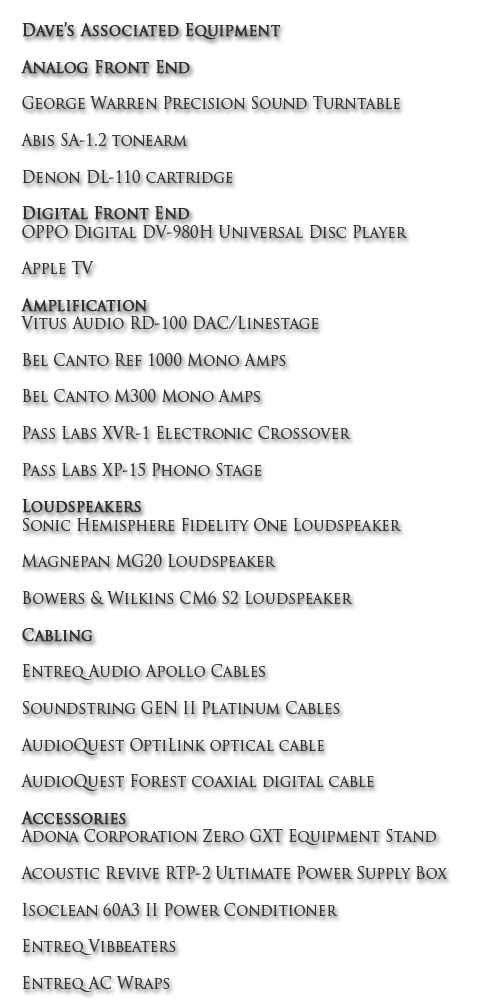 I initially setup my system with the Sigma MONOs in a typical mono amp configuration. One amp was connected to each of my Sonic Hemisphere Fidelity One loudspeakers. The Fidelity Ones are a full-range, three-way design that uses jumpers to connect the high and low frequency speaker inputs.
I initially setup my system with the Sigma MONOs in a typical mono amp configuration. One amp was connected to each of my Sonic Hemisphere Fidelity One loudspeakers. The Fidelity Ones are a full-range, three-way design that uses jumpers to connect the high and low frequency speaker inputs.
The analog outputs on my Vitus Audio RD-100 DAC/Linestage were connected to the amps and my primary source was my analog rig: George Warren turntable, Abis SA-1.2 arm and Denon DL-110 moving coil cartridge. The turntable fed my Pass Labs XP-15 phono stage, which in turn was connected to the analog inputs of the RD-100. All of the cabling was Soundstring GEN II Platinum.
The speakers sat 5’ away from the rear walls, about 8’ from the sidewalls and with about 10’ between them. They were toed-in about 5 degrees toward the center point and the listening position was about 10’ back. My approximately 26’ x 20’ listening room has 8’ ceilings and carpeted concrete floors.
The Listening Begins…
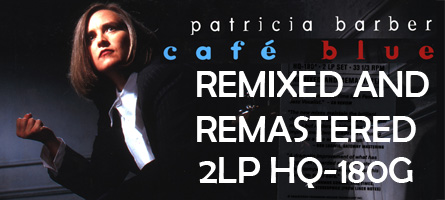 I began with one of my favorite vinyl discs, Mobile Fidelity’s three-LP, 45-RPM pressing of Patricia Barber’s Café Blue [Mobile Fidelity MFSL 3-45002]. This is an album whose songs should be familiar to most audiophiles, but the level of detail that is pulled from this version is jaw-dropping. From the start of the opening track, “What A Shame,” it’s obvious that the Sigma MONOs are something special. Driving the Fidelity Ones, the Sigma MONOs rendered this music with loads of soundstage detail. The space occupied by Barber’s piano was realistically prominent, as was the holographic quality of her smoky voice. The wonderful bass line throughout this song has natural depth and resonance and sounds like it’s coming from an acoustic instrument and not a synthesizer as it sometimes can.
I began with one of my favorite vinyl discs, Mobile Fidelity’s three-LP, 45-RPM pressing of Patricia Barber’s Café Blue [Mobile Fidelity MFSL 3-45002]. This is an album whose songs should be familiar to most audiophiles, but the level of detail that is pulled from this version is jaw-dropping. From the start of the opening track, “What A Shame,” it’s obvious that the Sigma MONOs are something special. Driving the Fidelity Ones, the Sigma MONOs rendered this music with loads of soundstage detail. The space occupied by Barber’s piano was realistically prominent, as was the holographic quality of her smoky voice. The wonderful bass line throughout this song has natural depth and resonance and sounds like it’s coming from an acoustic instrument and not a synthesizer as it sometimes can.
“Ode To Billy Joe” (side three, track three) is another tune that contains a really cool bass line, but it’s also accentuated with finger-snaps that really popped through the Fidelity Ones. This was the coolest this song has ever sounded to me. Next, it was on to the most dynamic song from this album, “Nardis” (side five, track one). It features piano and percussion solos that are must hears for evaluating any audio component, which is probably why you hear it so much at so many high-end shows. Rhythm, pace and speed all blossom through the Sigma MONOs, drawing you deeper into the performance of the musicians. They all seem to be occupying realistic spaces within the soundstage, giving the recording a “lifelike” feel.
 After a few hours indulging in the art-house cool of Barber, I felt the need to get into something considerably… funkier. So I put on The Robert Glasper Experiment’s Black Radio [Blue Note Records]. Now I know that Robert Glasper is essentially a jazz musician, but apparently there’s a part of him that wants to dwell in the Soul/Funk realm, and that’s how we have The Robert Glasper Experiment. This 2-LP set opens with “Lift Off,” which borrows heavily from some of the old George Clinton/Parliament songs of the 70’s, primarily the classic, “P-Funk (Wants to Get Funked Up),” so the music was rich with bass and features the smooth baritone voice of Shafiq Husayn narrating what is about to unfold on the rest of the album. And what unfolds is a brilliant fusion of Jazz, Soul, R&B, Rap, Funk and even a bit of Grunge Rock in the form of a cover of Nirvana’s “Smells Like Teen Spirit.” But one of my favorite tracks on this album is Erykah Badu’s reimagining of the Mongo Santamaria classic, “Afro Blue.” No matter the material, the Sigma MONOs get the most from each recording by rendering finely etched instruments and voices, bringing the performances to life in your listening room. They not only get out of the way of the music by not imparting any sonic characteristics of their own, but they don’t allow any other sonic artifacts to loom either. These may be the quietest high-powered amps I’ve heard in my home.
After a few hours indulging in the art-house cool of Barber, I felt the need to get into something considerably… funkier. So I put on The Robert Glasper Experiment’s Black Radio [Blue Note Records]. Now I know that Robert Glasper is essentially a jazz musician, but apparently there’s a part of him that wants to dwell in the Soul/Funk realm, and that’s how we have The Robert Glasper Experiment. This 2-LP set opens with “Lift Off,” which borrows heavily from some of the old George Clinton/Parliament songs of the 70’s, primarily the classic, “P-Funk (Wants to Get Funked Up),” so the music was rich with bass and features the smooth baritone voice of Shafiq Husayn narrating what is about to unfold on the rest of the album. And what unfolds is a brilliant fusion of Jazz, Soul, R&B, Rap, Funk and even a bit of Grunge Rock in the form of a cover of Nirvana’s “Smells Like Teen Spirit.” But one of my favorite tracks on this album is Erykah Badu’s reimagining of the Mongo Santamaria classic, “Afro Blue.” No matter the material, the Sigma MONOs get the most from each recording by rendering finely etched instruments and voices, bringing the performances to life in your listening room. They not only get out of the way of the music by not imparting any sonic characteristics of their own, but they don’t allow any other sonic artifacts to loom either. These may be the quietest high-powered amps I’ve heard in my home.
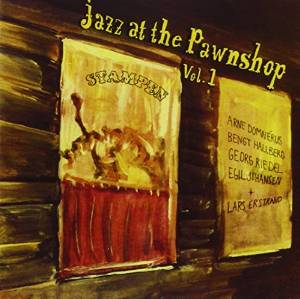 The final recording of note that I listened to with my system in this configuration was the audiophile favorite, Jazz At The Pawn Shop [Proprius]. This is a recording that still gets a lot of play during most audio shows because of its great performances and stellar live recording quality. The amount of enjoyment that you get out of listening to this album will be influenced heavily by the quality of your amplification. It’s a live recording from a Swedish jazz club and is recorded in such a way that you can easily hear the patrons’ table conversations, waiters clanging silverware and glassware and of course some really wonderful music. Over the years, my favorite tune on this album has become, “I’m Confessin’.” Through the Sigma MONOs, it is rendered with sweetness and scads of detail, particularly from vibraphonist Lars Erstrand. You realize just how percussive in nature the vibraphone is when he plays. The same can be said of the airiness around the wind instruments played by Arne Domnerus. If you’re not familiar with this album (you’re not a true audiophile) you’d do well to check it out, and you’d be even better off if you’re using amps like the Sigma MONOs.
The final recording of note that I listened to with my system in this configuration was the audiophile favorite, Jazz At The Pawn Shop [Proprius]. This is a recording that still gets a lot of play during most audio shows because of its great performances and stellar live recording quality. The amount of enjoyment that you get out of listening to this album will be influenced heavily by the quality of your amplification. It’s a live recording from a Swedish jazz club and is recorded in such a way that you can easily hear the patrons’ table conversations, waiters clanging silverware and glassware and of course some really wonderful music. Over the years, my favorite tune on this album has become, “I’m Confessin’.” Through the Sigma MONOs, it is rendered with sweetness and scads of detail, particularly from vibraphonist Lars Erstrand. You realize just how percussive in nature the vibraphone is when he plays. The same can be said of the airiness around the wind instruments played by Arne Domnerus. If you’re not familiar with this album (you’re not a true audiophile) you’d do well to check it out, and you’d be even better off if you’re using amps like the Sigma MONOs.
But Wait, There’s More…
While discussing doing this review I mentioned that my reference system features the venerable Magnepan MG20s. Now for those of you who haven’t read any of my reviews over the past few years, what you need to understand is that I bought my Maggies, sans factory crossovers. Therefore, I use the excellent Pass Labs XVR-1 electronic crossover between my Vitus linestage and the Sigma MONOs. This also means that I have to use four channels of amplification (two pairs of mono amps). My typical setup includes the Bel Canto M300 mono amps on the left and right high frequency speaker inputs (in the case of the Maggies it’s a ribbon tweeter/midrange) and the REF1000M monos on the left and right low frequency speaker inputs. I was already thrilled to be receiving a pair of the Sigma MONOs to review, so imagine my surprise when they suggested sending me a second pair of amps so that I could try them out in my system with the Maggies! Now you see why I love this company so much.
I haven’t written much about my experience with the two pair of amps thus far because more people will experience these amps in the usual mono amp configuration that I’ve been writing about. But as the Monthy Python boys would say, “And now, for something completely different…”
After wrapping up my listening sessions using one pair of Sigmas on my Fidelity Ones, it was now time to get into some really cool stuff. I got my Maggies setup in their usual spot and connected one pair of Sigmas to the ribbon tweeter/midranges and the other pair to the woofer panels. From a power standpoint, you’re basically talking about only a 50 watt per channel increase (650 watts to 700 watts) and the Bel Cantos are also designed using switch-mode power supplies. But sonically there is so much more in those Sigmas.
Staying with my analog rig as a source, I started listening to the brilliant 180 gram audiophile pressing of Al Di Meola’s Elysium [Inakustik]. I spent an entire weekend listening almost exclusively to this double album set. I’m a big Di Meola fan and have always been mesmerized by the things he can do with a guitar. This music is rich with layers of beautiful Latin guitar and dynamic percussions, but hearing it rendered through this system was a rare experience for me. “Dynamic as Hell!’ is what I kept seeing in my notes, especially while listening to the tracks, “Babylon” and “Amanjena.” If there’s anything that I like in a good high-performance system it’s linearity. I want the level of detail and musicality through the soundstage to be the same. Don’t get me wrong, in the treble I want well defined vocals, lifelike timbre and holographic imaging without edge or overdone brightness. In the midbass and deep bass I want instruments and percussions to sound like they come from instruments and not just beefed up low-end energy. What this systems gives me is top-to-bottom musicality, realistic instrument and vocal reproduction and a soundstage that well defined and realistic in size and depth.
 Another great recording that gave me all of the above and more is Ahmad Jamal’s Live At The Montreal Jazz Festival 1985 [Atlantic]. As many times as I have listened to the opening track, “Yellow Fellow” on this two LP recording, I have never heard it rendered this realistically. And believe me, I cranked this puppy to as loud as I could tolerate and the system never lost its composure. It was easy to reproduce a lifelike event and the impact that the Sigma MONOs had on this music was unmistakable. Airier and more dynamic highs and mids and deeper, better defined bass and soundstage. Again, I’ll repeat, “dynamic as Hell!”
Another great recording that gave me all of the above and more is Ahmad Jamal’s Live At The Montreal Jazz Festival 1985 [Atlantic]. As many times as I have listened to the opening track, “Yellow Fellow” on this two LP recording, I have never heard it rendered this realistically. And believe me, I cranked this puppy to as loud as I could tolerate and the system never lost its composure. It was easy to reproduce a lifelike event and the impact that the Sigma MONOs had on this music was unmistakable. Airier and more dynamic highs and mids and deeper, better defined bass and soundstage. Again, I’ll repeat, “dynamic as Hell!”
Conclusion
My summary of the Classé Audio Sigma MONOs should not come as a surprise to anybody. They are state-of-the-art, high-end audio products that are attractively styled, thoughtfully designed and fabulous sounding products, while still being reasonably affordable. I flat out loved these amps. If it weren’t for the fact that I recently spent a week in Las Vegas where I married my longtime sweetheart, I’d probably be working out a way to purchase both sets of these amps; they’re that good. But what I can do is give them my highest recommendation because they certainly deserve that. You, dear readers deserve to go out and checkout these awesome amps. It doesn’t matter if you’re looking for your first true audiophile system or upgrading an existing system. The Sigma MONOs are definitely next level products. I can’t imagine a moderately priced system that these amps won’t improve. And should you ever be in a position to use two pairs of mono amps, let your search begin and end here.


dave thomas
Specificatios:
Price: $3,999.00 USA
|
Classe’ Audio Sigma MONOs |
||
|
Frequency response |
|
10Hz – 20kHz, -1dB into 4Ω |
|
Output power |
|
350W rms into 8Ω 700W rms into 4Ω |
|
Harmonic Distortion |
|
|
|
Peak Output Voltage |
|
151V peak to peak, 53.4V rms no load |
|
Input Impedance |
|
100kΩ Balanced / 50kΩ SE |
|
Voltage gain |
|
29 dB |
|
Input level at clipping |
|
1.8Vrms Balanced/SE |
|
Intermodulation |
|
>80 dB below fundamental into 8Ω Balanced |
|
Signal to Noise Ratio |
|
-109 dB at peak output into 8Ω (AES17) |
|
Standby power consumption |
|
.5W @ 230 V |
|
Rated power |
|
130W @ 1/8th power into 4Ω |
|
Mains voltage |
|
90V – 264V, 50/60Hz |
|
Overall Dimensions |
|
Width: 17.00″ (433mm) |
|
Net weight |
|
22.0 lb (10.00 kg) |
|
Shipping weight |
|
29.0 lb (13.18 kg) |
Contact:
Classe’
5070 Francois Cusson
Lachine, Quebec
H8T 1B3, Canada
Tel: +1 (514) 636-6384
Fax: +1 (514) 636-1428
Email: sales@classeaudio.com
Web:http://www.classeaudio.com
Stereo Times Masthead
Publisher/Founder
Clement Perry
Editor
Dave Thomas
Senior Editors
Frank Alles, Mike Girardi, Russell Lichter, Terry London, Moreno Mitchell, Paul Szabady, Bill Wells, Mike Wright, and Stephen Yan,
Current Contributors
David Abramson, Tim Barrall, Dave Allison, Ron Cook, Lewis Dardick, John Hoffman, Dan Secula, Don Shaulis, Greg Simmons, Eric Teh, Greg Voth, Richard Willie, Ed Van Winkle, Rob Dockery, Richard Doran, and Daveed Turek
Site Management Clement Perry
Ad Designer: Martin Perry






Be the first to comment on: Classé Audio Sigma Mono Amps